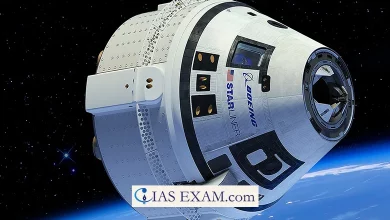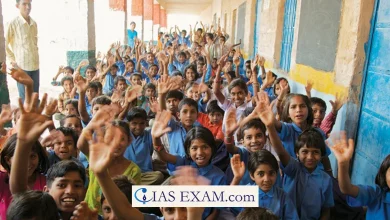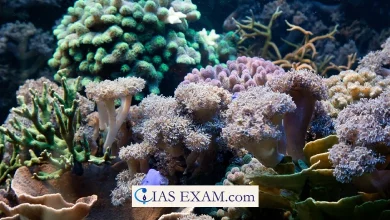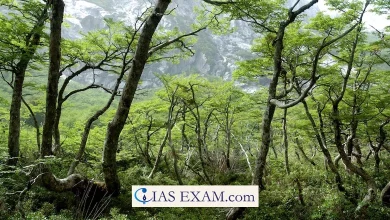India’s Atmospheric Research Testbed in Central India (ART-CI)
Syllabus: Science and Technology [GS Paper-3]
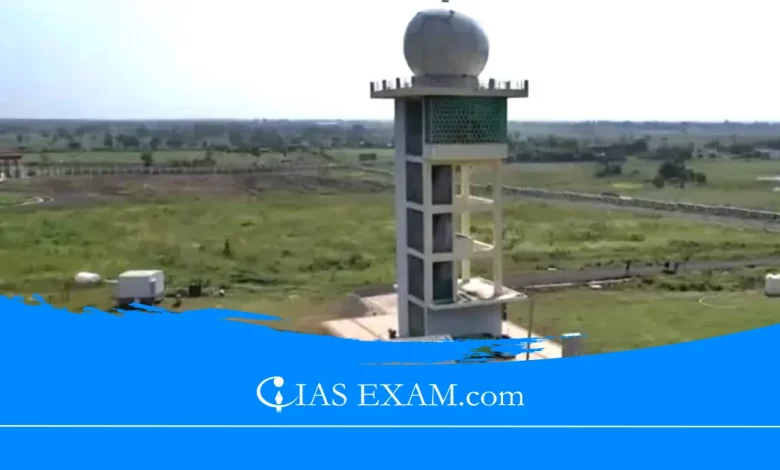
Context
India has recently opened the first phase of its Atmospheric Research Testbed in Central India at Silkheda in Sehore district, which is around 50 km northwest of Bhopal in Madhya Pradesh.
Key Points
- The establishment of the Atmospheric Research Testbed (ART) in Central India is a significant development in the study of the Indian monsoon.
- It is created by the Indian Institute of Tropical Meteorology (IITM) and aims to improve understanding of monsoon convection and land-atmosphere interactions in the central region of India, particularly within the monsoon core zone.
- This zone is important for the regional climate system, especially during the southwest monsoon season.
About Atmospheric Research Testbed in Central India (ART-CI)
- Establishment: ART-CI is a project established by the Indian Institute of Tropical Meteorology (IITM), under the Ministry of Earth Sciences (MoES).
- Location: It is located at Silkheda, approximately 50 km northwest of Bhopal, Madhya Pradesh.
Objectives
- Understanding Monsoon Convection: The main objective of this research project is to acquire an in-depth knowledge of the mechanisms responsible for the establishment and intensification of the monsoon convective system.
- Land-Atmosphere Interactions: It is developed upon the studies of the comprehensive links between the land surface and the atmosphere particularly in the monsoon area where it occurs.
- Research and Model Improvement: ART-CI aims to develop observational campaigns and to adjust the basic parameterizations of numerical weather prediction models in order to improve the children models.
Instruments and Equipment
- Remote-Sensing and In-Situ Instruments: The testbed is equipped with a wide range of instruments for continuous observation of atmospheric conditions.
- Key Instruments: These include aethalometers for aerosol studies, cloud condensation nuclei counters, laser ceilometers, micro rain radars, and more.
- Future Installations: Plans include the installation of a wind profiler, W-Band radar, radiosonde, LIDAR, sky imager, and a complete radiation system.
Phases of Development
- First Phase: Emphasises research fields such as convection, land-atmosphere interactions, and microphysics over central India.
- Second Phase: Note the proposed expansion of the study towards eastern and north-eastern India to assess thunderstorm process.
Strategic Importance
- Location Advantage: A core advantage for satellites is that they occupy a position in the monsoon core zone which implies gathering the data on rain-bearing weather systems directly.
- Comprehensive Study: The facility contributes to a thorough research on monsoon precipitation onset, humidity profiles, cloud dynamics, and size of rain drops.
Impact
-
Improving Weather Prediction: Having the present research which will lead us to more realistic weather and monsoon predictions.
- International Collaboration: The ART-CI will be a veritable physical simulation laboratory equipped with the observational equipment and the models to test the physical parameterization schemes for time dependent input.
- Training: The emphasis is on the establishment of contact, training, and in general on giving the public access to the ART-CI information for the wider scientific and educational benefits.
Challenges
- Location and Infrastructure: The testbed is close to a region with a monsoon climate that is greatly influenced by seasonal and interannual oscillations. Performing an effective and good arrangement of the up-to-date utilities in such an environment is a difficult mission.
- Instrumentation and Maintenance: Installing and sustaining the observation site with high-tech instruments and their operation and maintenance is a work to be done and, particularly in spite of harsh weather conditions, such a task needs special attention.
- Data Management: This huge amount of data is accumulated by the different devices. It necessitates an archiving system of high level and an analysis application.
- Research and Development: It is required to conduct continuous R&D work in order to enhance the predictive models accuracy and become able to foresee not only the single process but also on the ecosystem complexities.
- Collaboration and Funding: Stable interaction with many national and international study centres as well as guaranteeing permanent funding are vital for endurance of cellular automata-based intelligence development.
Conclusion
The Atmospheric Research Testbed in Central India (ART-CI) is a pivotal project for understanding the monsoon and atmospheric processes. Despite its advanced technology and significant potential for meteorological research, it faces challenges such as maintaining sophisticated equipment, managing extensive data, and securing ongoing funding and collaborations. Overcoming these challenges is crucial for the testbed to realise its full potential in improving weather predictions and aiding in climate-related policy-making. The success of ART-CI can provide valuable insights not only for regional weather phenomena but also for global atmospheric science.
Source: The Indian Express
UPSC Mains Practice Question
Q.Discuss the potential impact of the Atmospheric Research Testbed in Central India (ART-CI) on enhancing monsoon prediction accuracy and its implications for India’s agrarian economy and disaster management.





.png)
